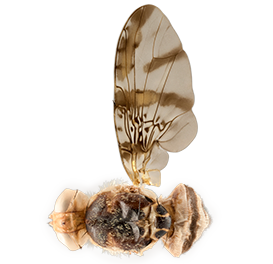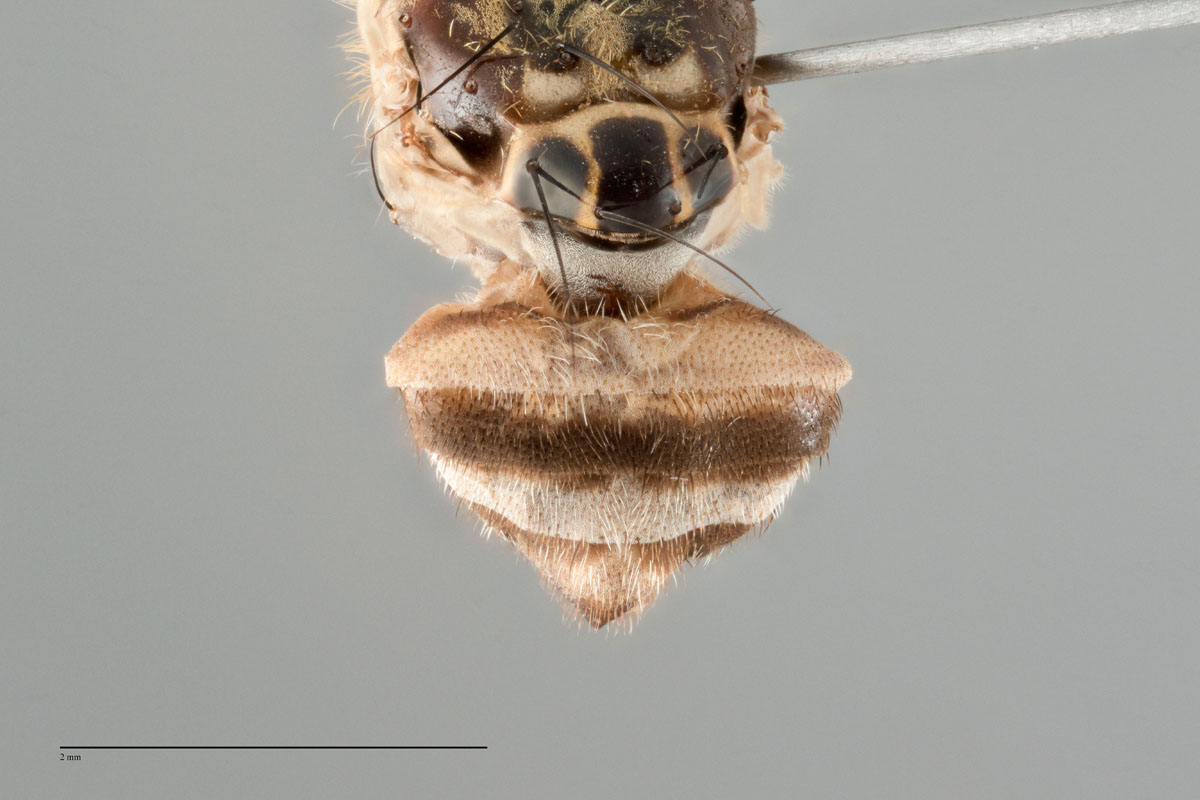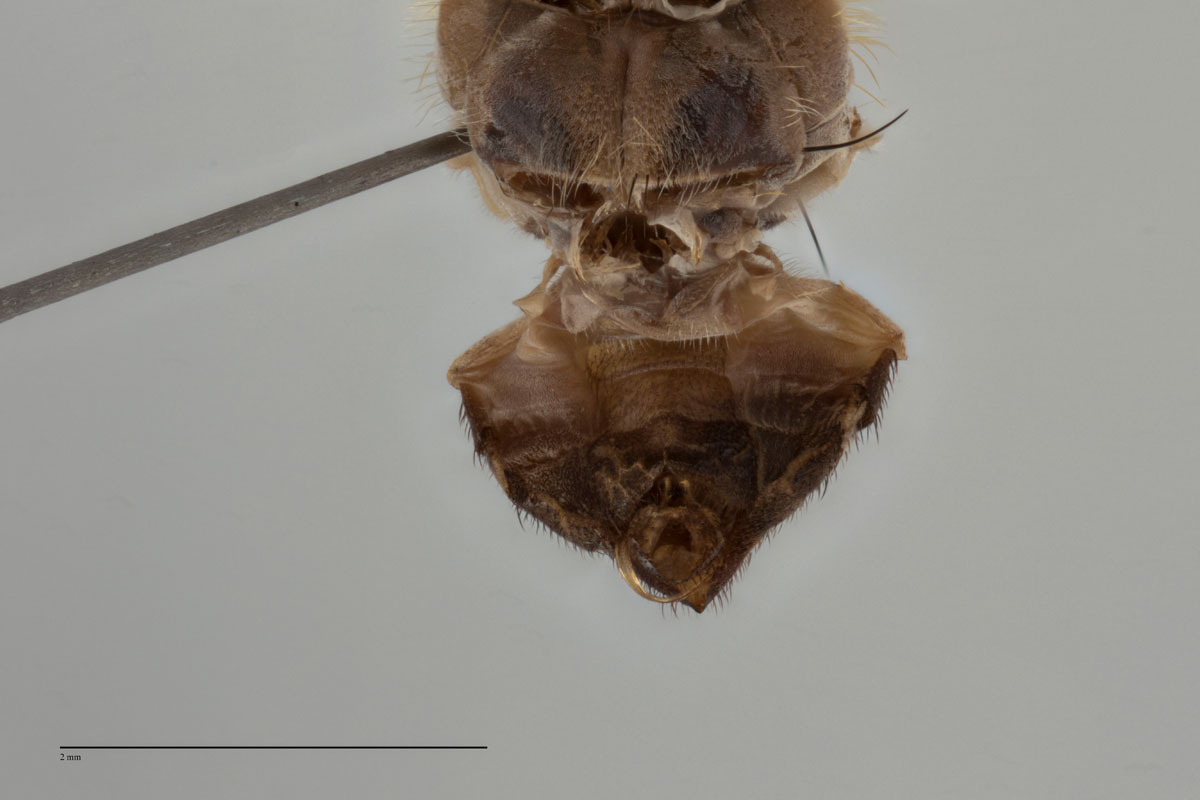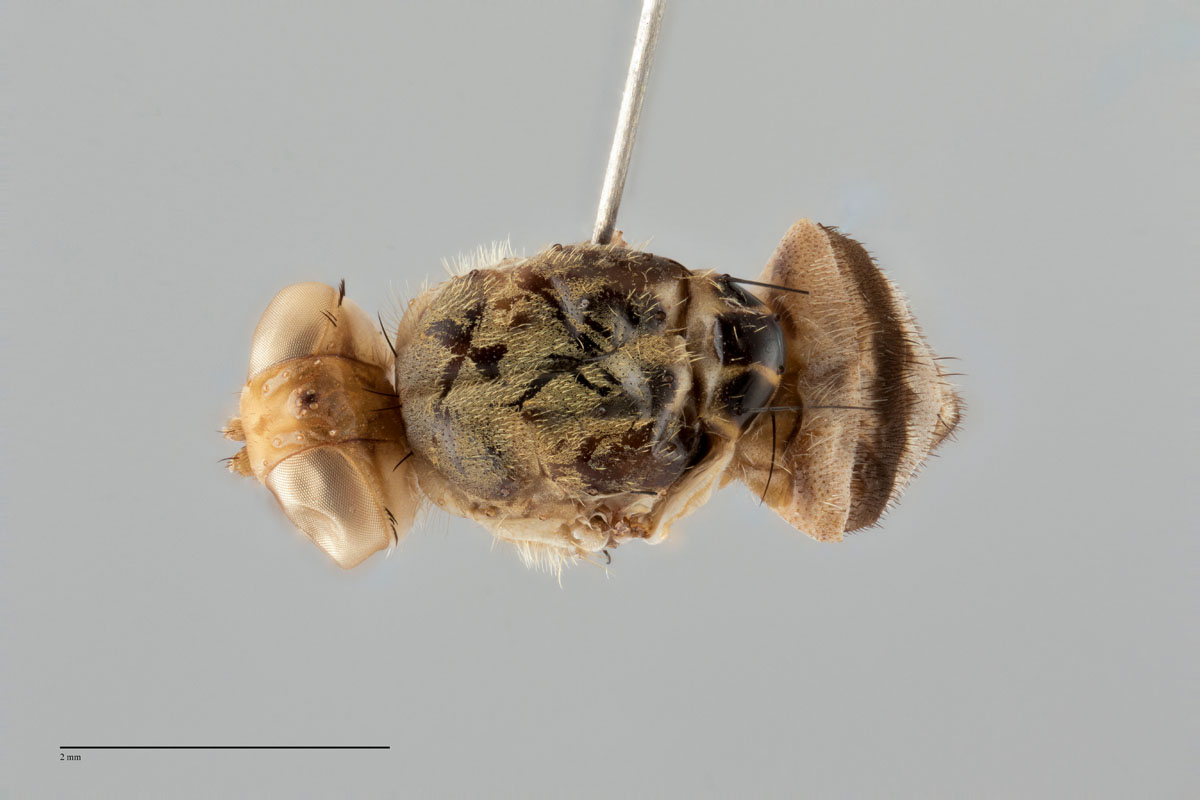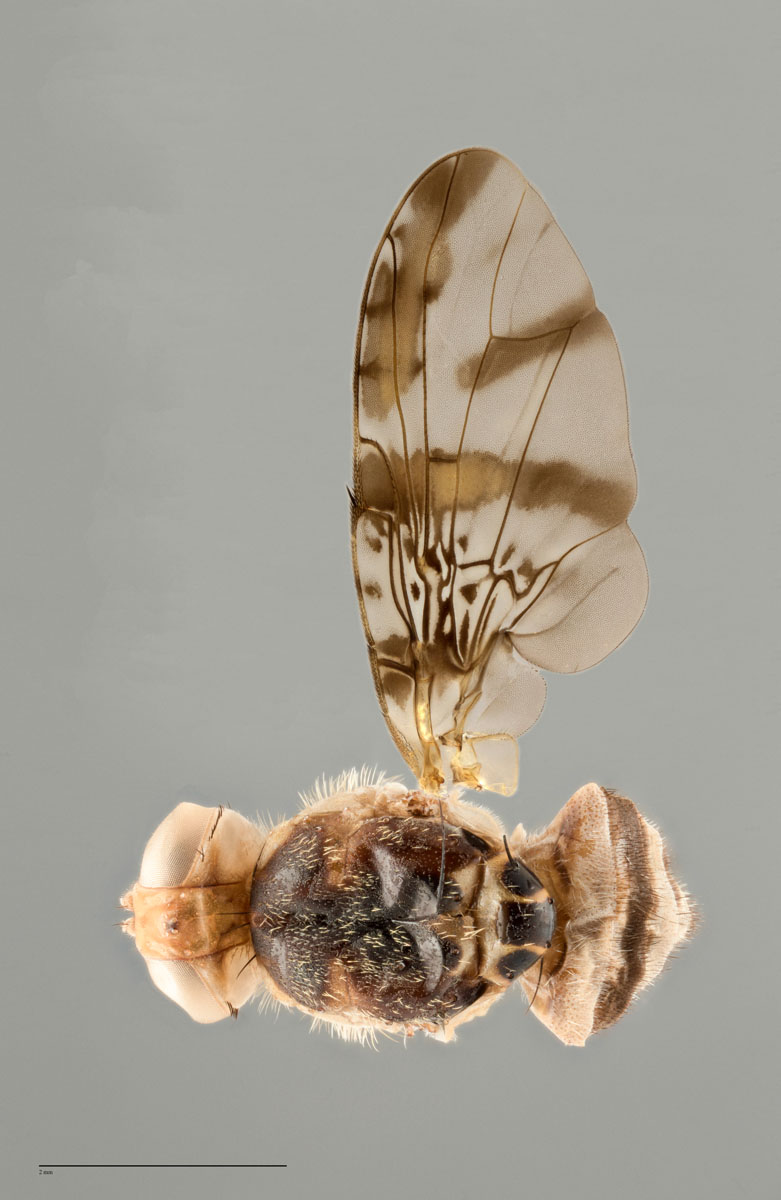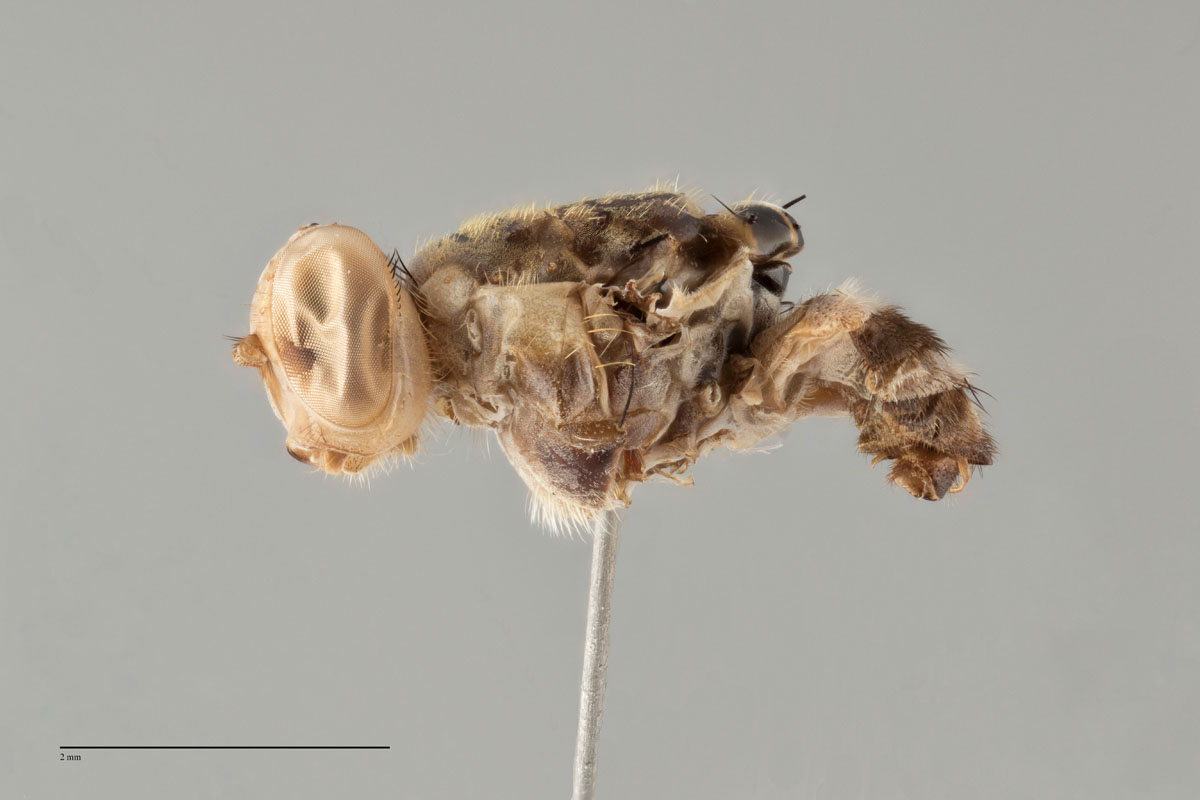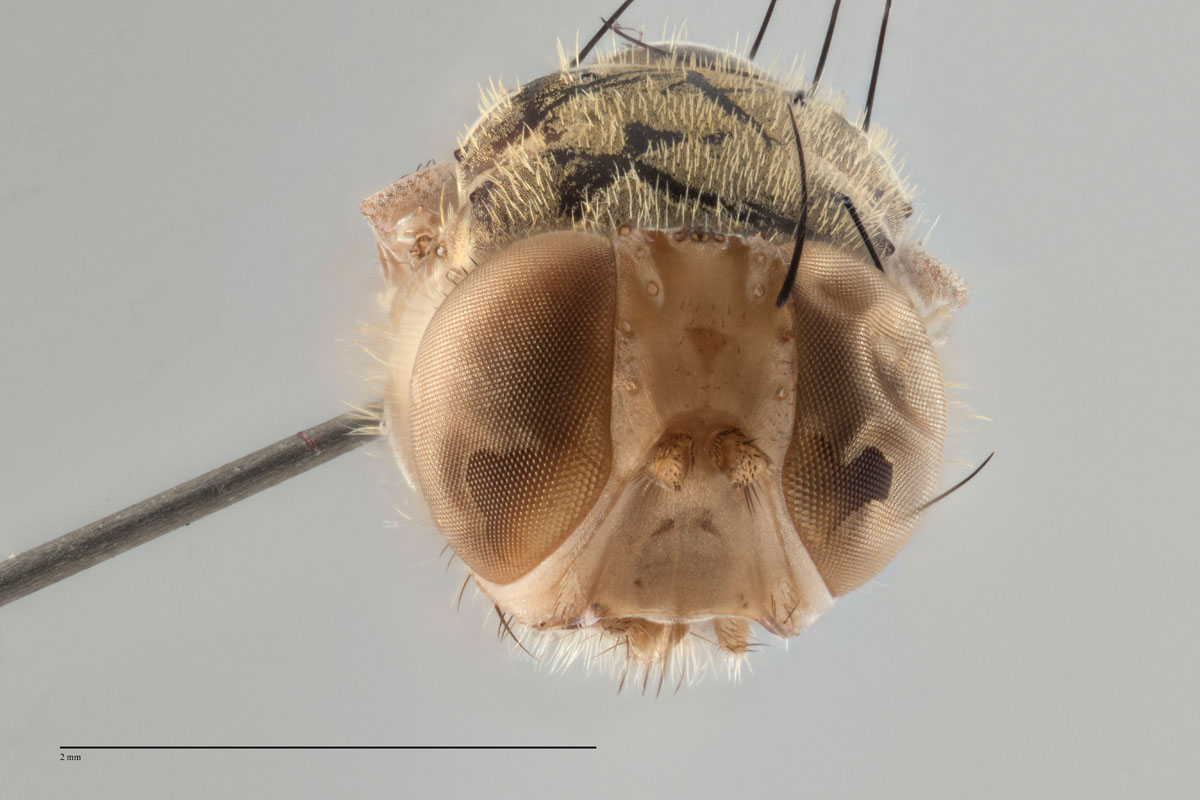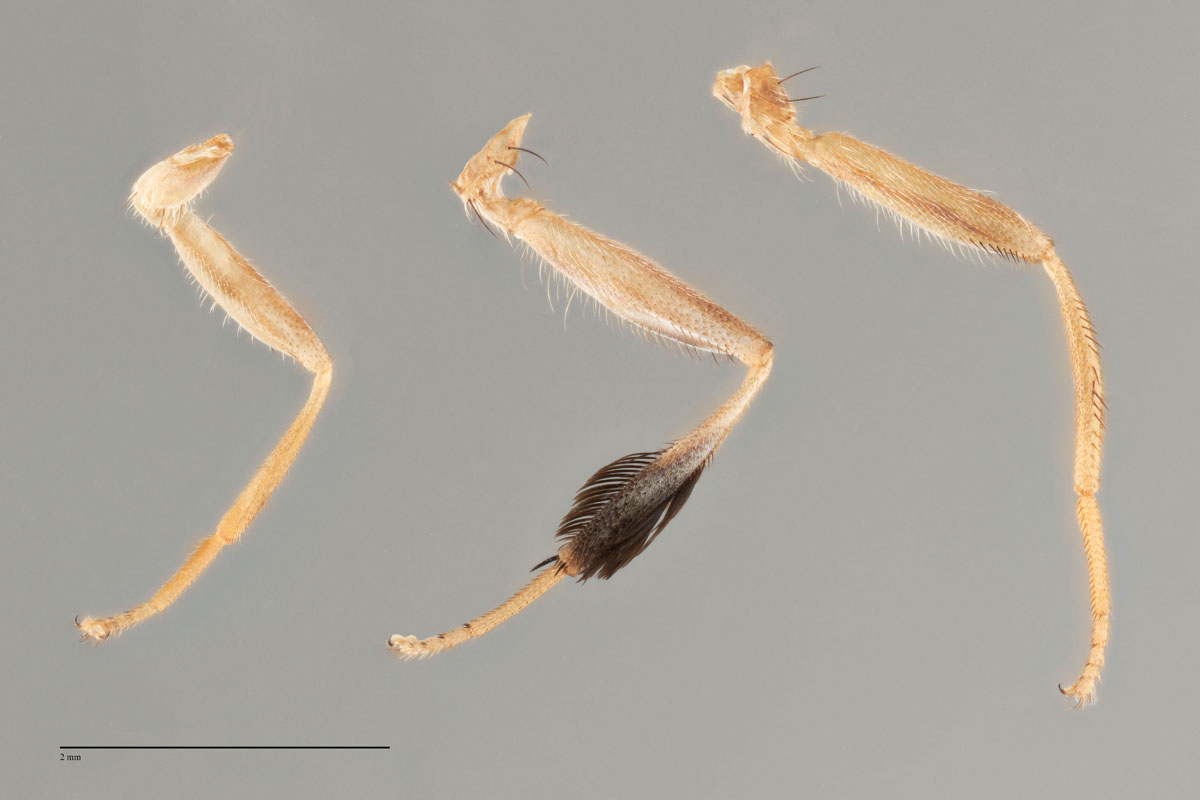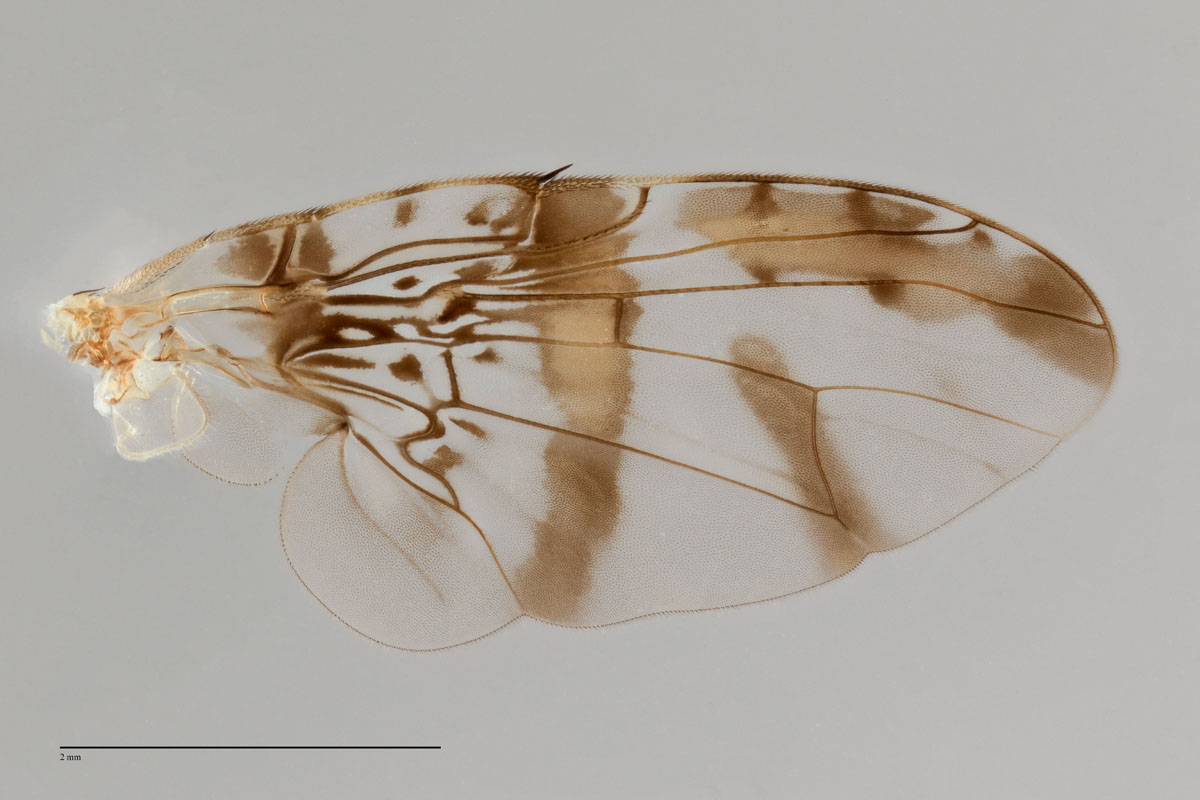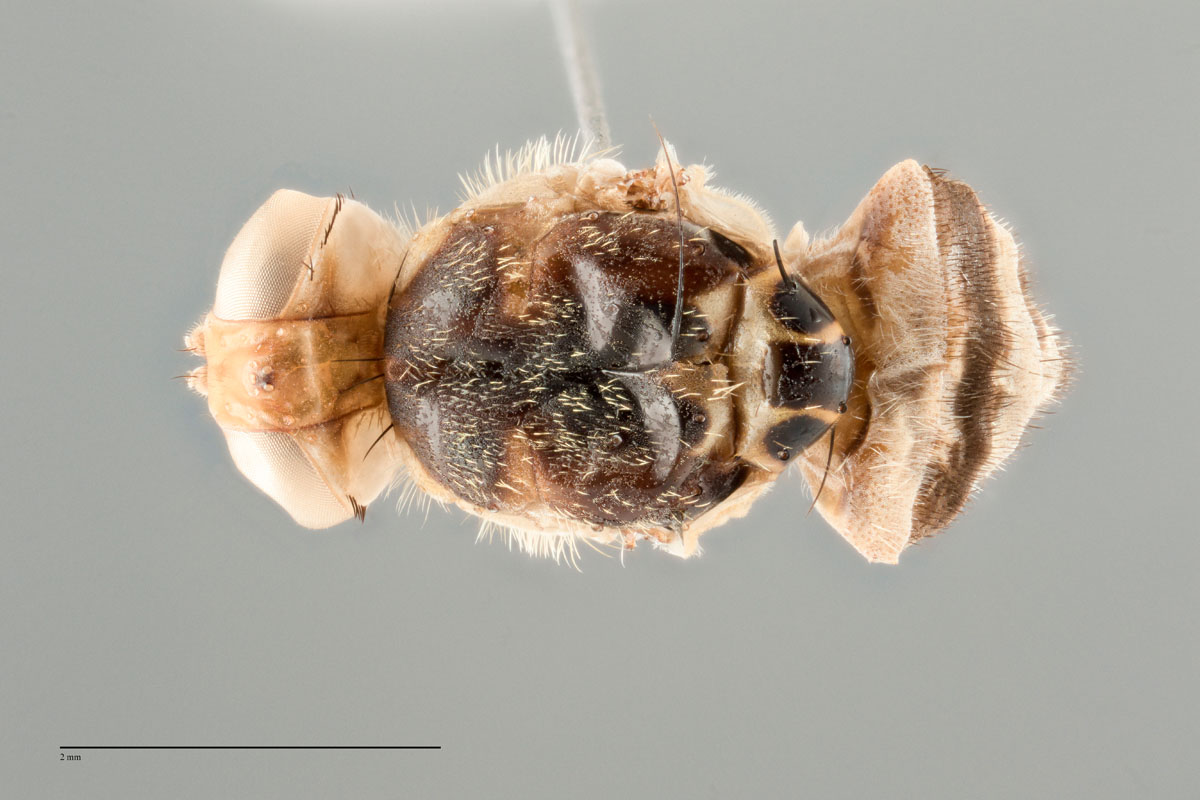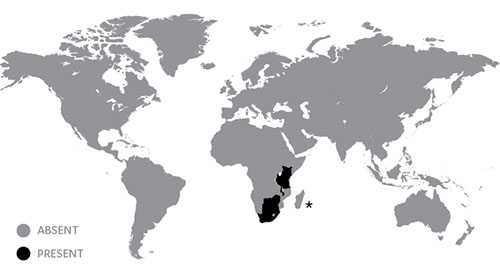Diagnosis
Morphological – adult
This is a recently described species closely allied to Ceratitis rosa. The description of this taxon is provided below.
Male
Body length
4.81 (3.68–5.68) mm; wing length: 5.55 (4.48–6.08) mm.
Head
Antenna yellow. First flagellomere in lateral view 2–3 times as long as wide, obtuse apically. Arista short to medium pubescent, ventral proximal rays at most twice width of arista at base. Two frontal setae, thinner than, and subequal in length to, anterior orbital seta; two orbital setae, anterior orbital longer than posterior one; ocellar seta at least 4 times as long as ocellar triangle; postocellar seta black, shorter than lateral vertical seta. Frons convex, not protruding in lateral view, yellow to yellowish-white. Genal seta and setulae black. Face and occiput yellowish-white, the latter somewhat darker dorsally.
Thorax
Postpronotal lobe white to yellowish-white, without black middle spot around base of postpronotal seta. Scutum ground colour greyish to greyish-brown, sometimes with orange tinge; with streaks and darker markings but without distinct spots except pair of separate prescutellar white markings, usually with pale yellowish-white area in between. Setae black. Anepisternum on ventral half darker yellowish-brown to brown; with pale pilosity, one anepisternal seta. Anatergite and katatergite white. Scutellum yellowish-white, usually with two narrow separate dark brown spots basally, sometimes less distinct; apically with three separate black spots, extending anteriorly to level of or just anterior to basal scutellar seta. Subscutellum black.
Legs
Slender; yellow or yellowish-white except where otherwise noted; setation mixed pale and black. Forefemur with dispersed rows of long black setulae posterodorsally, posteroventrally shorter and pale; ventral spine-like setae black. Midfemur with few dispersed pale setulae ventrally; midtibia thin at base, moderately and gradually broadened; anteriorly black with conspicuous silvery shine when viewed from certain angle on distal 0.66 to 0.75 (black color sometimes inconspicuous in teneral specimens but silvery shine is always present), black color usually not reaching ventral and dorsal margins, especially on basal part; with black feathering dorsally along distal 0.75 and ventrally along distal 0.66, occasionally to distal 0.75. Hindfemur at distal 0.25 with longer setulae dorsally and ventrally.
Wing
Markings yellowish-brown. Anterior apical band, subapical band and discal band present, posterior apical band absent; anterior apical band not touching discal band; subapical band isolated. Cross-vein R-M situated at or just before midlength of cell dm. Brown streaks and spots present in basal cells.
Abdomen
Ground colour mainly yellow. Tergites 2 and 4 on posterior half with greyish microtrichosity; anterior margin sometimes narrowly brownish coloured, especially laterally. Tergite 3 with posterior half patchily brownish, anterior half yellowish-brown, both parts not clearly demarcated; sometimes more extensively brown. Tergite 5 with basal half brownish, sometimes divided medially by paler spot.
Female
Unknown. Females cannot be differentiated currently and, therefore, no female specimens are included in the type series. The description of the female of C. rosa as given in De Meyer and Freidberg 2006 applies to C. quilicii sp. nov. as well.
Morphological – larvae
Data not available.
Molecular
DNA barcoding
Data not available.
PCR-RFLP Test 1
BsrI: Data not available
HinfI: Data not available
HhaI: Data not available
Sau3AI: Data not available
SnaBI: Data not available
SspI: Data not available
Vspl: Data not available
PCR-RFLP Test 2
Data not available.
